The St. Johannes church is a late Romanesque brick building, which was built on a mound of pre-christian times around the first quarter of the 13th century. There was first a nave, elongated and flat-roofed church hall with pairs of arched windows and portals, but it was soon transformed into a vault. The nave was divided into four bays. A early Gothic 8-rip vault was installed via a system of pair-arranged plate arches as the cathedral of Ribe (Denmark) is fitted out. They are preserved in the middle and eastern yoke.
With subsequent repairs in the western yoke was a wooden ceiling pulled in and the choir was box-shaped limited and provided with a Baroque porch. A sundial (1756) was made of red sandstone and is embedded on the south wall of the anteroom.
The bell tower (1731) is a square timber with an tetragonal barely conical helmet, what was renewed in 1922 and renovated in 1993. It contains a baroque bronze bell (J. Armowitz, Husum) from the year 1738 and a new bronze bell (from Rinker, Sinn / Hesse) from the year 2006. |
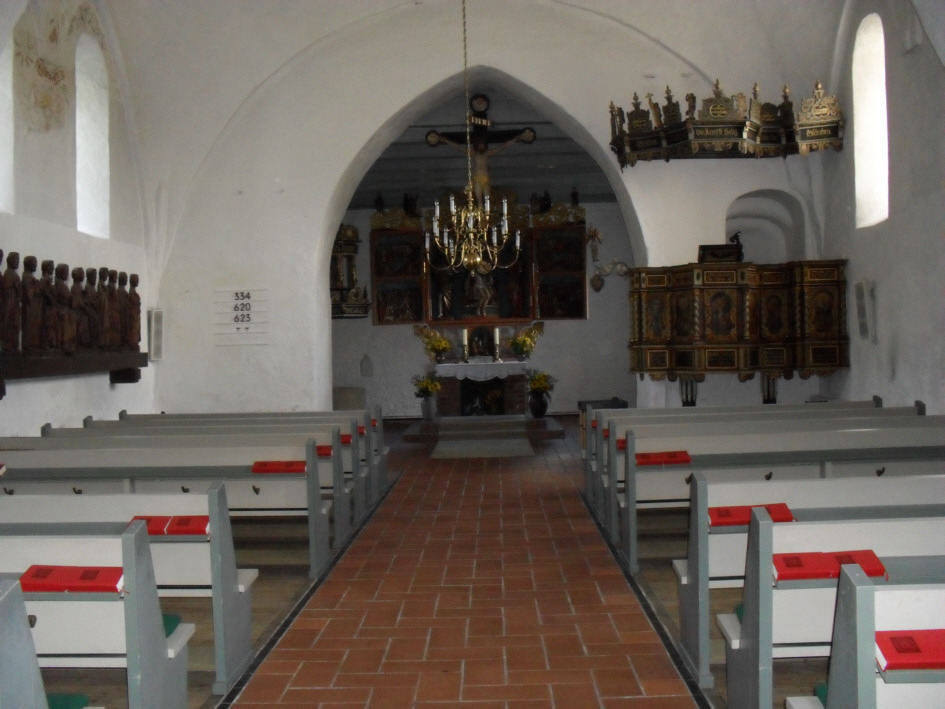 |
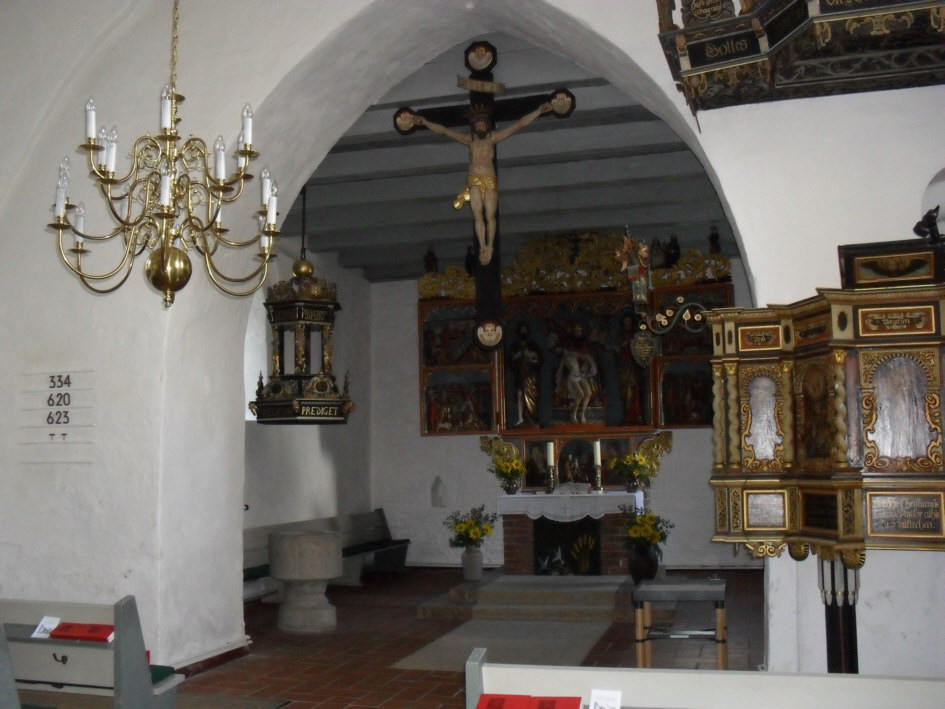 |
A number of valuable items are treasured inside of the white-painted church hall. The first view falls on the carved Gothic retable (c. 1550). |
In the central shrine is the enthroned Godfather shown, who - eight angels hover around him - holds the falling Christ. On the left sides of the throne stands John the Baptist with book and lamb and on the right side John the Evangelist the poisoned chalice holding.
The radially splitted wings displays four scenes from the life of John the Baptist. Top left starts with the birth beneath the beheading. In the upper right wing is the feast of Herod displayed, beneath the sermon scene. The outside edges of the wings (to see behind the altar or the altar is closed) bear painted scenes from the Passion of Christ (probably valuable Flemish paintings from 1520 with severe damages).
In the predella is a carved group of "Anna selbdritt" (St Anna, Maria and the baby Jesus) located along with Joseph, Joachim and the blessing Godfather in the background. At the side are Mary and John the Evangelist. |
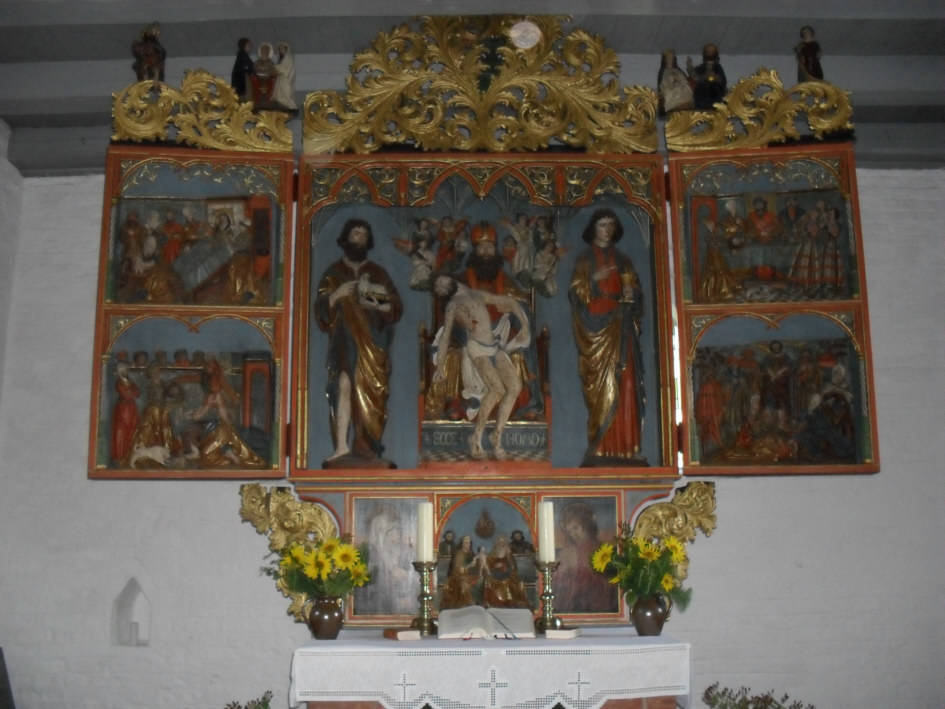 |
The retable is surrounded by baroque, gold-plated tendrillars (15th Century) in which other figures are displayed: Coronation of the Virgin, Christopher, a deacon with book and a three figure group what displays the circumcision of Jesus. |
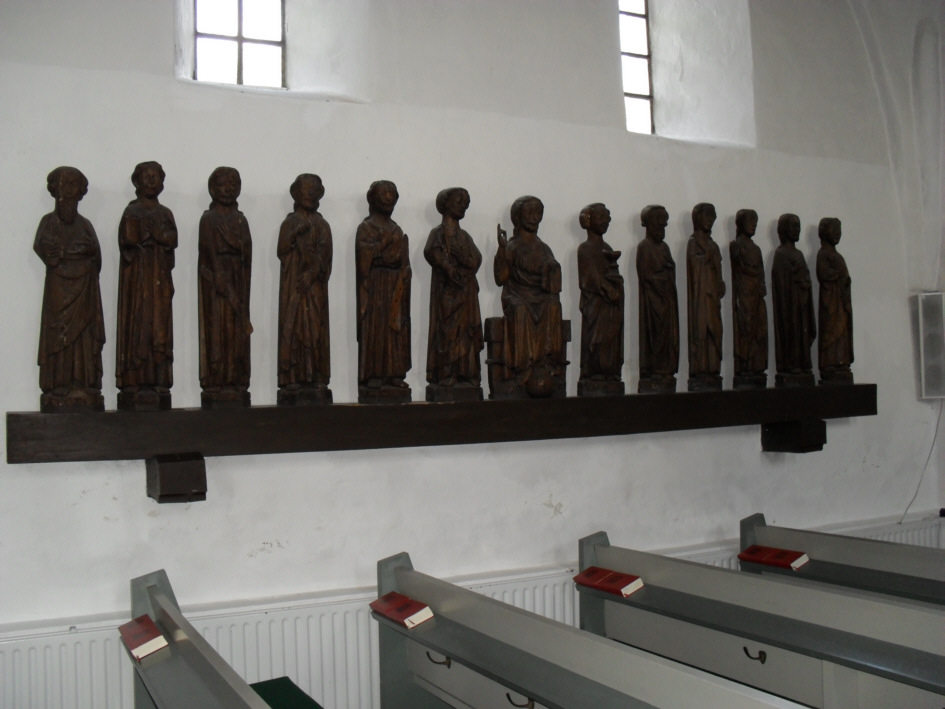 |
A special piece of equipment is the complete preserved series of the twelve Apostles and the enthroned Christ in the center. The group is mounted on a girder at the north wall of the church and was created in the early 14th century. |
The cruzifix what came from Marne in Dithmarschen county is a cross board with 8 edges and cherup heads. It was made in the 17. Century.
The oldest piece was made between the 12. and 13. century and is the granite baptismal font with a round foot and a cylindrical bowl with round arches. The hexagonal oaken font cover is decorated with attachments and putti and was made 1686. |
From the year 1682 is the pulpit of the Tonderan Master Peter Petersen II, the same year he created a similar pulpit for the church in Lindholm. The eight-part galleried balustrade is decorated with twisted columns, scrollwork and paintings of the paradise, the annunciation, the birth, the crucifixion, the resurrection, the ascension, pentecost and the last judgement.
Above is located a sound lid in the same form designed as the pulpit is. It is decorated with paintings and putti. At the pulpit is an hourglass as a symbol of impermanence hung at a wrought-iron lever (1750). It was endowed by members of the community. |
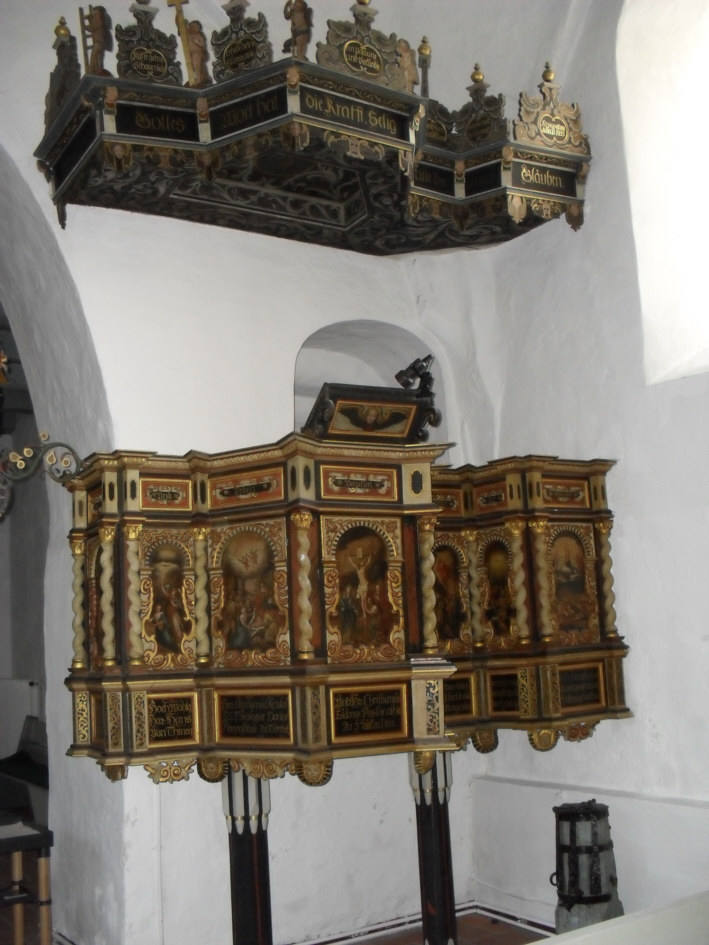 |
On the 1. and 2. bay were wall paintings uncovered when the church was painted in 1993. The crab paintings in the west bay impressively show how the church will have looked in their coloring at the end of the middle ages. On the exposed area on the north wall at least three figurative or ornamental painted stories can be read (15th to 17th century). The painted stories lie on top of each other and interfer each other. None of the layers is restored. The exposed surfaces remain open as "windows into the history of the church". |
Some gravestones in the St Johannes cemetery:
| The coat of arms shows that the family came from East Prussia. Most refugees from East Prussia came to Schleswig-Holstein. |
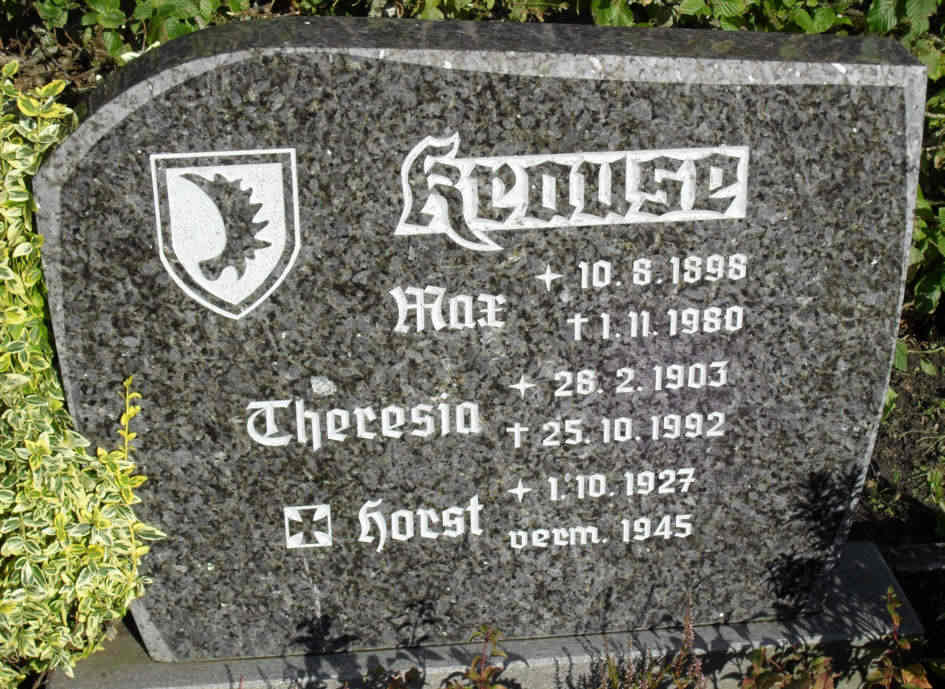 |
Krause
Max *10.08.1898 †01.11.1980
Theresia *28.02.1903 †25.10.1992
Horst
*01.10.1927 missed 1945 |
|
|





